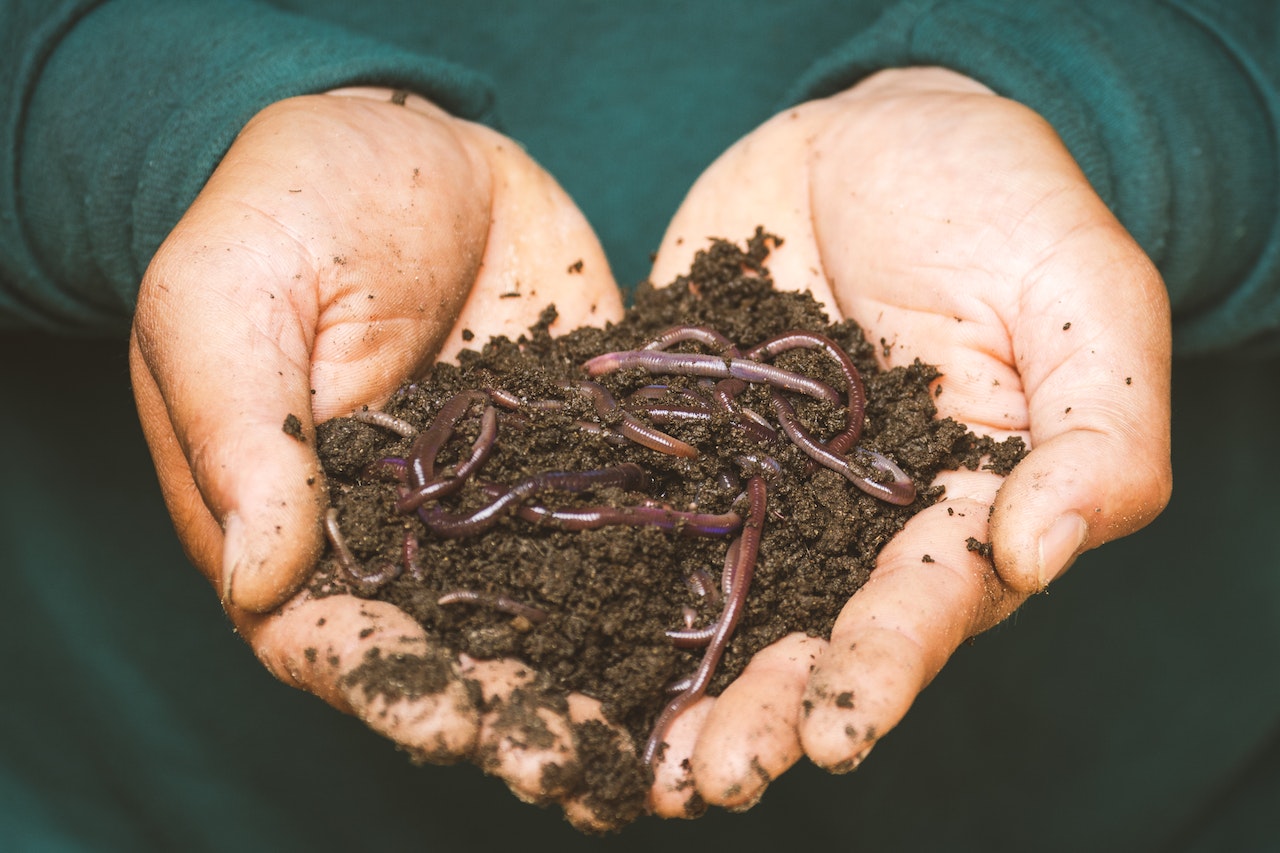Compost worms, often called red wigglers, are red earthworms used for composting food scraps and other organic material. Earthworms are burrowing annelids that live in the soil. They are important for aerating and draining the soil and burying organic matter. Earthworms are not used in composting.
Table of Contents
What is an earthworm?
In the class Oligochaeta, earthworms are segmented worms. They live and feed in soil.
Their digestive system extends the entire length of their body, and they can consume food weighing up to their body weight.
The main characteristic of earthworms’ feeding habits is burrowing deep into the soil to locate their food. This makes earthworms unsuitable for vermicomposting.
As a result, gardeners would be required to turn compost continuously since they do not bring materials to the bin’s surface.
Earthworms, commonly known as garden worms, also require moist environments. Despite this, they play an important role in aerating and draining the soil by making tunnels inside it.
Common earthworms are better suited to garden soil than a compost pile as they dwell far below the soil surface.
What is a red wiggler?
The compost worm is a species of earthworm known as the red wiggler worm. They are adapted to living in decaying organic matter such as rotting vegetation, compost, and manure.
In terms of vermicomposting, red wiggler worms are the most suitable earthworms due to their surface-dwelling nature.
In other words, they bring organic materials like kitchen scraps, coffee grounds, leaf litter, and other organic waste to the surface, which reduces the need for continuous mixing of organic materials.
Furthermore, their high reproductive rates also contribute to the success of vermicomposting and are perfect for your vermicomposting bin or worm farm.
Differences between red wigglers & earthworms
Here are 6 key differences between red wrigglers and earthworms.
| Characteristic | Earthworm | Red wiggler |
| Use | Aerate and drain soil | Vermicomposting |
| Color | Red-brown | Red-purple |
| Size | 6-14 inches | 2-3 inches |
| Living space | Burrowers | Surface dwellers |
| Reproduction rate | Slower | Faster |
- Earthworms are burrowing, segmented worms that are important for aerating and draining soil, while compost worms are red wiggler worms used in vermicomposting.
- Earthworms can be reddish-brown, while compost worms can be reddish-purple in color. As a result, earthworms and compost worms can be distinguished visually.
- Earthworms typically measure 6-14 inches in length, while compost worms measure 2 to 3 inches.
- Earthworms thrive in moist soil and open gardens, while the red wigglers prefer warm environments and can readily adapt to temperature fluctuations.
- Earthworms carry their food into the soil and are burrowers, whereas compost worms carry their food onto the soil and are, therefore, surface dwellers.
- An earthworm reproduces more slowly than a compost worm. This faster reproduction process makes this worm species a better choice for composting or vermicomposting.
Which one to use for your compost or vermicompost?
The red wiggler worm is used for composting as it is a surface-dwelling worm with a high reproduction rate.
Because the red wrigglers prefer worn environments and are known to be highly adaptable to temperature fluctuations and can handle higher temperatures, they are the superior choice for your compost bin, vermicompost, or worm bin.
European nightcrawler worms are cousins of red wrigglers. The only difference between them is their size, as nightcrawlers are larger.
You can find them burrowing and thriving in most compost heaps and animal manure piles.
While red wigglers prefer to dwell near the surface, nightcrawlers prefer to dig deeper. As a result, they are unlikely to compete for the same food source.
Can earthworms and red worms live together?
Even though earthworms and red worms can be housed together, it is not recommended.
This is because the two species have evolved to adapt to different population densities, temperatures, and soil depths.
Contrary to popular belief, worms are not capable of interbreeding or hybridizing. However, this does not imply that worms are unaffected by their surroundings.

